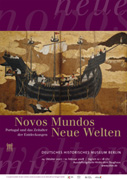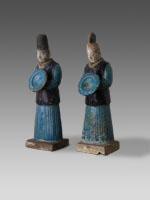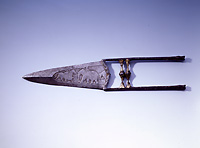


Prologue
| Portugal in the Middle Ages
| Conditions at the Start
| Voyages of Discovery
Cartography and Nautics
| New Worlds – Old Empires
| Portugal Overseas
| Art and Curiosity Cabinets
Portugal in the 16th Century
| International Conflicts
| Foreign Images
In the course of their voyages the Portuguese navigators met with a great number of different empires and old civilizations that had gone through their own respective historical development. They had different languages, traditions and religions as well as autonomous systems of rule and economy.
In America the Portuguese first met with members of the Tupí people. On the coast of Africa they encountered kingdoms that maintained extensive trade relations with the African interior, collected tribute and were versed in the art of metalwork. When the Portuguese arrived in southern India, they came upon the Vijayanagara Empire with its magnificent temples. But then in the course of the 16th century the Muslim Mughal dynasty brought large parts of the Indian subcontinent under their control. In China the emperors of the Ming dynasty ruled at the time. In the 15th century the Chinese had already undertaken extensive nautical expeditions across the Indian Ocean and had reached eastern Africa. In Japan numerous territorial rulers were struggling against each other to seize power. Then at the beginning of the 17th century the Tokugawa shogunate
succeeded in creating a new, powerful central state.

Zwei stehende Würdenträger, China, 14./15. Jahrhundert
Wiesentheid, Kunst-
sammlungen Graf von Schönborn

Indischer Katar, Indien,
17.-18. Jahrhundert,
Berlin, Deutsches Historisches Museum
